The state of Kerala, located in southwestern India, is known for the famous Kerala Backwaters, an extensive network of canals that you can navigate while discovering the life of the people who live there.
Like so many travelers, that was the reason that brought us to this Indian state, but once the visit was over, we decided to explore Varkala.
Although we were initially hesitant between Varkala and Kovalam, the 15 days we spent in this coastal town, including Christmas and birthdays, showed that choosing the first was a more than correct decision.
Varkala is a quiet coastal town with an interesting combination of beaches, cliffs and temples that are well worth spending a few days visiting. The presence of ancient temples suggests that the area has been inhabited for centuries, as well as being influenced by various cultures such as Arab and European.
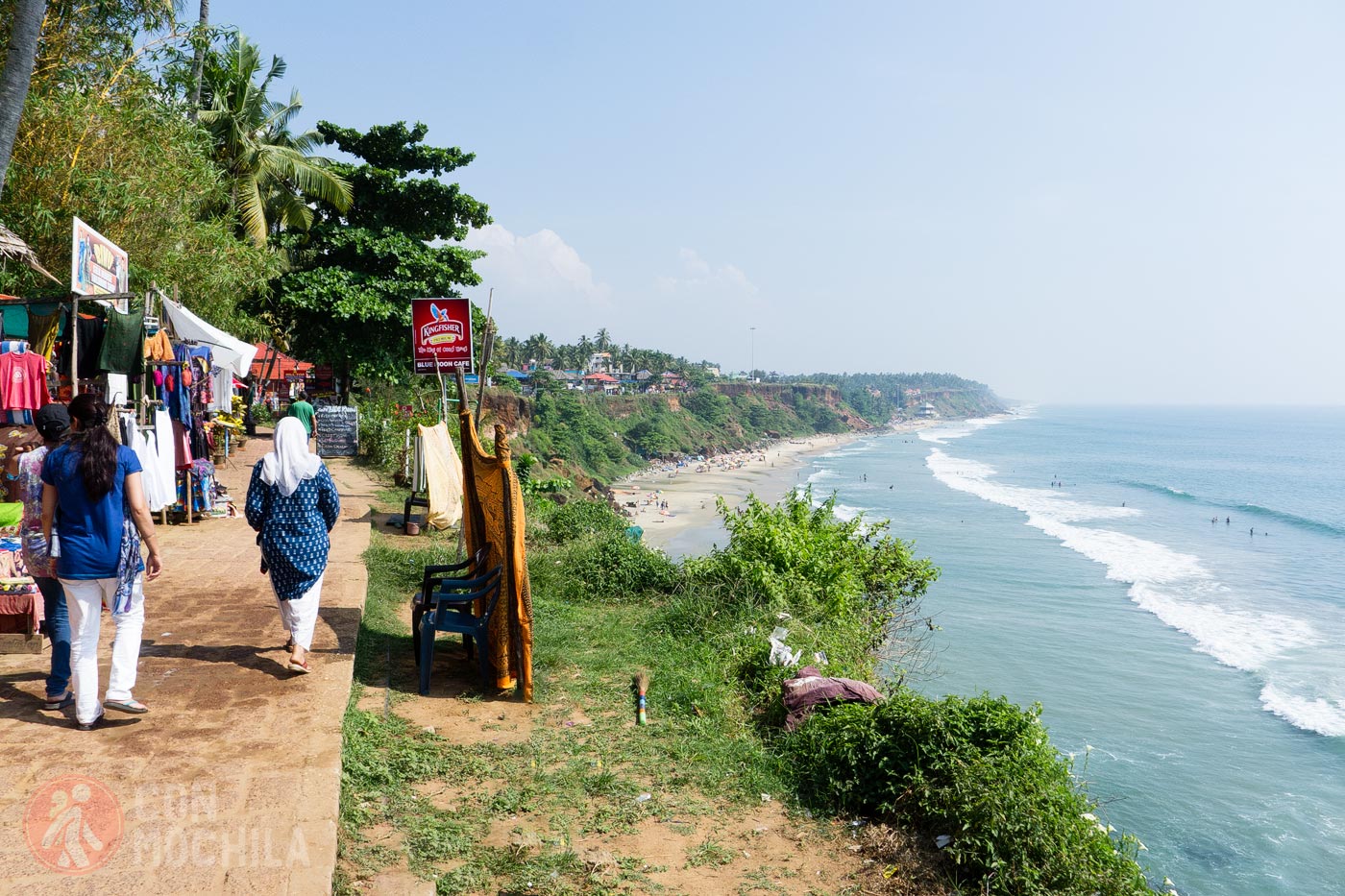
At the top of its impressive cliffs, you will find restaurants, shops and cafes with panoramic views over the beaches. In recent years, Varkala has seen an increase in tourism, but you can still enjoy this relaxed fishing village.
Varkala experiences a tropical climate and three main seasons: summer, monsoon and winter. Here’s the best time to visit this coastal town in Kerala.
We know that the subject of visas can be somewhat confusing, especially for India, where obtaining one is an essential requirement for entry. In the article on how to obtain an Indian visa step by step (coming soon) you have information on how to apply for one online for up to 5 years.
It’s essential to travel to India with comprehensive insurance. We were among the first to offer the popular IATI discount, and you can now get it with Heymondo Travel Insurance as well.
You can find more information about both companies through the links provided above, or you can access the discount directly using the buttons below (in both cases, you’ll see the reduced final price on their website):
While many hotels, guesthouses, and restaurants in India offer free Wi-Fi, some travelers prefer or need a constant connection. We’ve included details on obtaining a eSIM India card with unlimited data (from Holafly) or with fixed data but cheaper (from Saily).
If you want to get it directly, here’s the link (with a discount) for both companies:
Although not well connected, Varkala is accessible by train from cities such as Bangalore or Trivandrum. You can buy a train ticket in one of the sleeper classes (3rd class). From the train station, you can take a taxi or a bus to the beach in Kerala, about 5 km away.
A good way to reach Varkala is by bus, as it is connected to numerous cities in the southern part of the state of Kerala.
The nearest airport is Thiruvananthapuram, approximately 36 km away. It offers connections and flights to major cities in India and Southeast Asia, such as Delhi, Kolkata, Mumbai and Bangalore.
The 2,000-year-old Janardana Swami Temple is situated on a hill near Papanasam Beach. It is dedicated to Vishnu and is a major Hindu pilgrimage center in Varkala. Janardana Swami has several colorful images of Vishnu, Garuda, or Shiva, and a pond. Visitors are welcome to walk around the temple grounds, but are not allowed inside, the most sacred area.
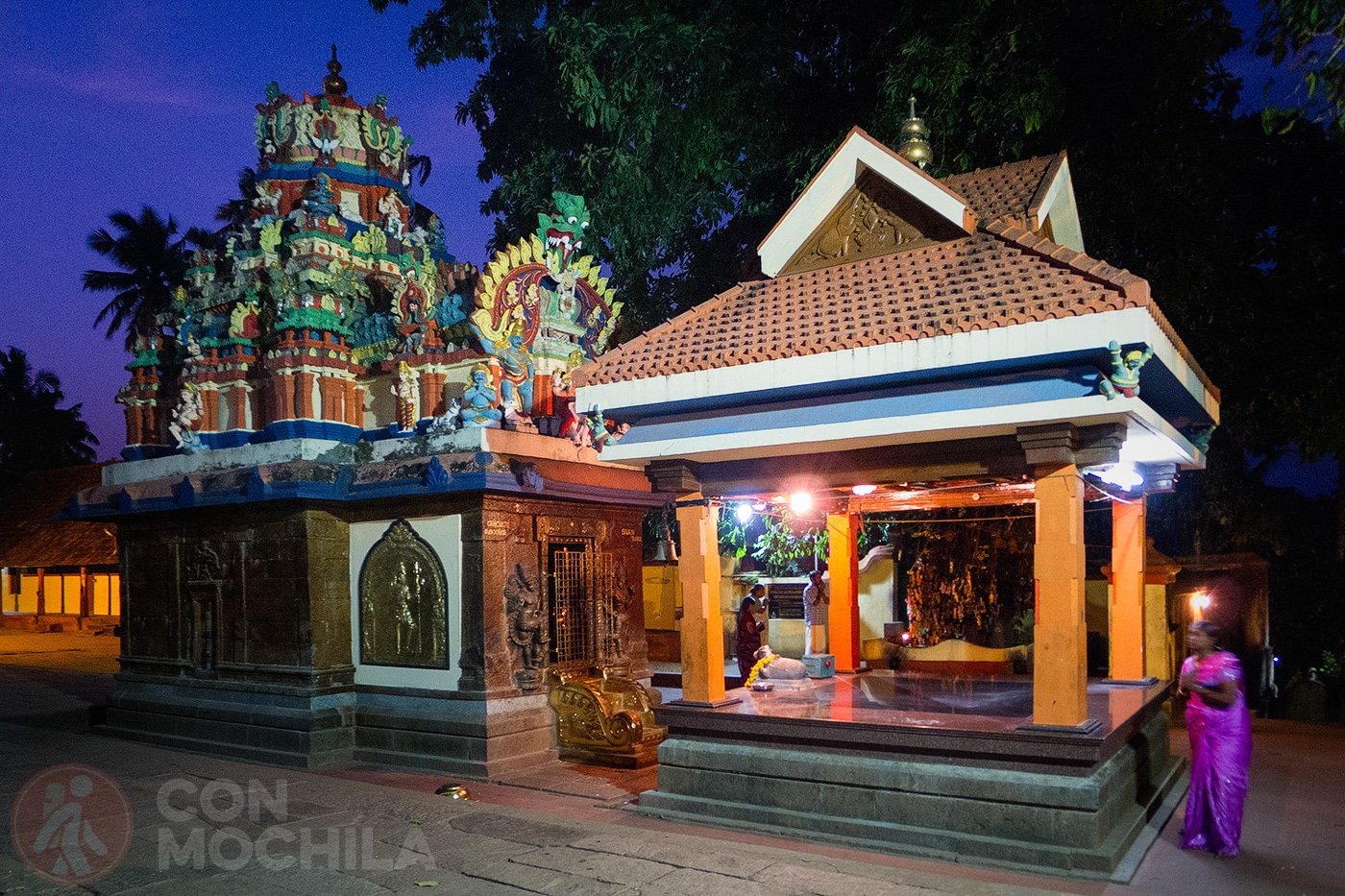
When we were there, we had to settle for listening to the music during a ritual they were celebrating.
They say that the waters at Papanasam Beach cleanse the soul of sin. Despite the crowds at certain times (and the sand being so clean compared to the cliff), renting a bodyboard for a while for a few rupees, which you also have to haggle over, is great fun, as the waves are big and long enough to make you “surf” for a few seconds.
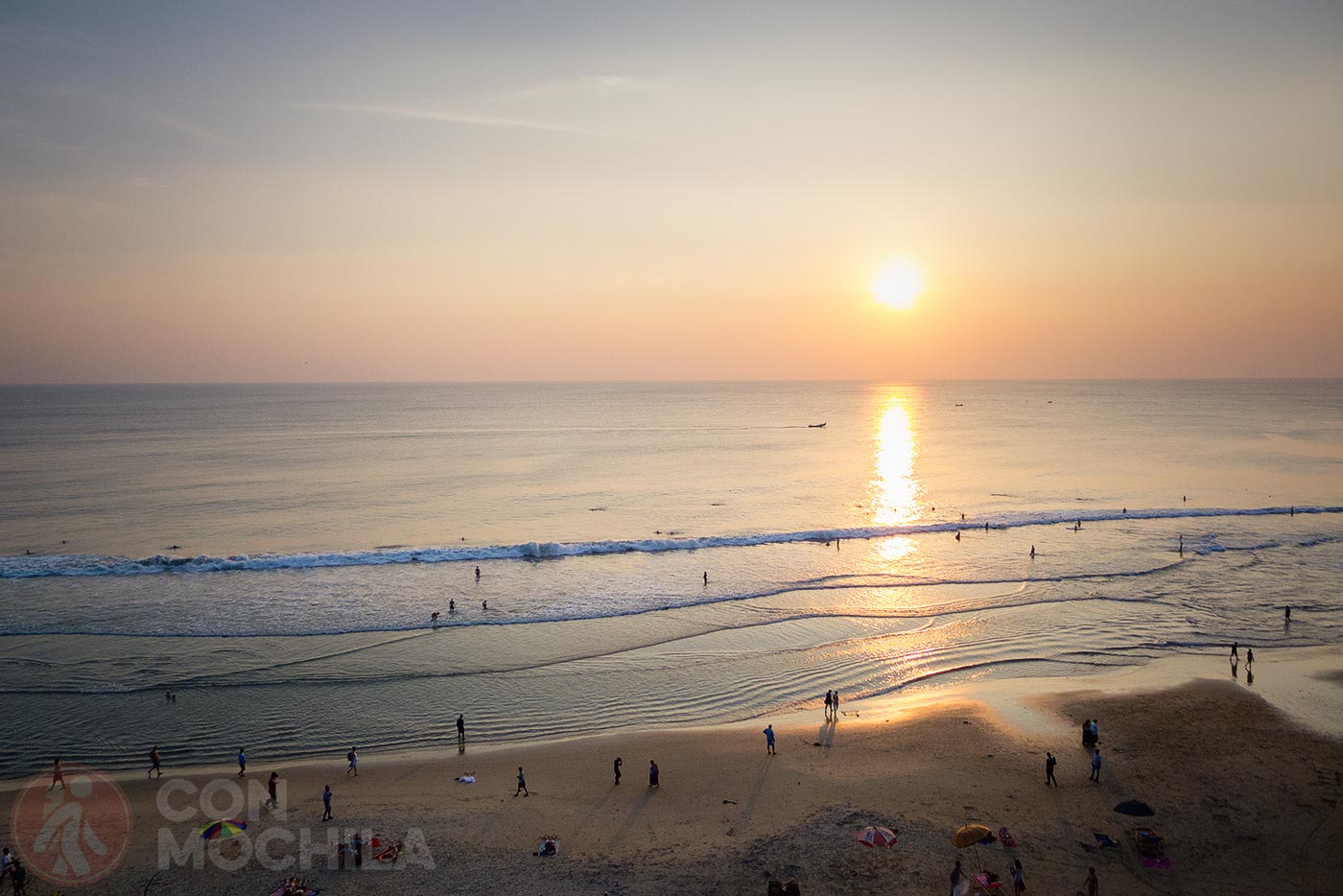
Be very careful with the strong currents that can sweep away a careless or overconfident swimmer.
Black Beach is a much less frequented beach with extremely powerful waves capable of swallowing you up and taking you to shore after making you spin around in the water several times (we can attest to this).
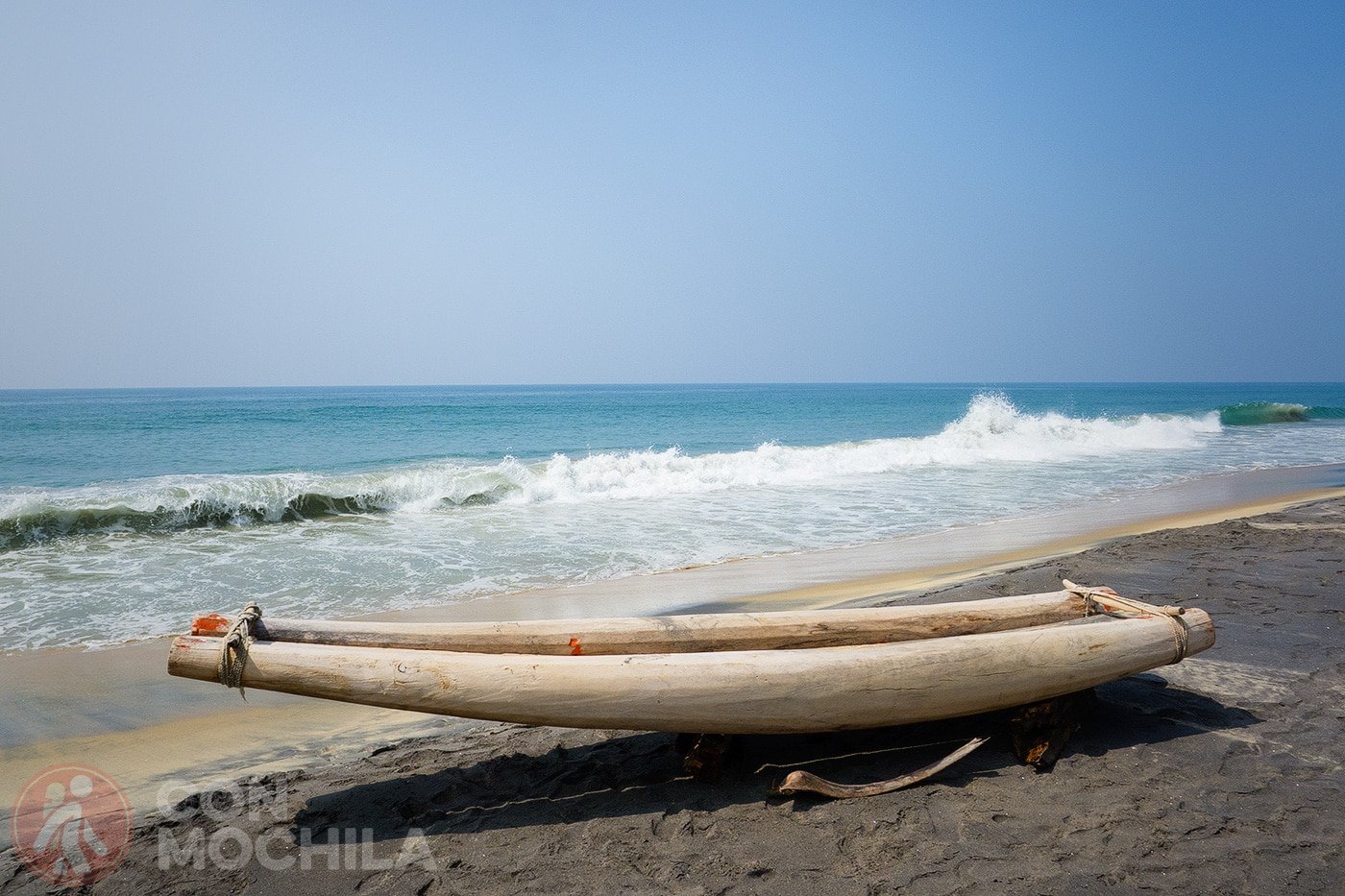
To get there, you have to go through the entire shopping area at the top of the cliff and, after more than 10 minutes walking, passing in front of a mosque, when the shop windows, the Ayurvedic therapy stalls and the hotels disappear, you find the beach.
Anjengo or Anchuthengu is a small town located very close to Varkala. Initially a Portuguese settlement, the British East India Company managed to establish itself in Anjengo and build the Anjengo Fort in 1694. Abandoned in the late 19th century, it served as a defense during the Mysore Wars.
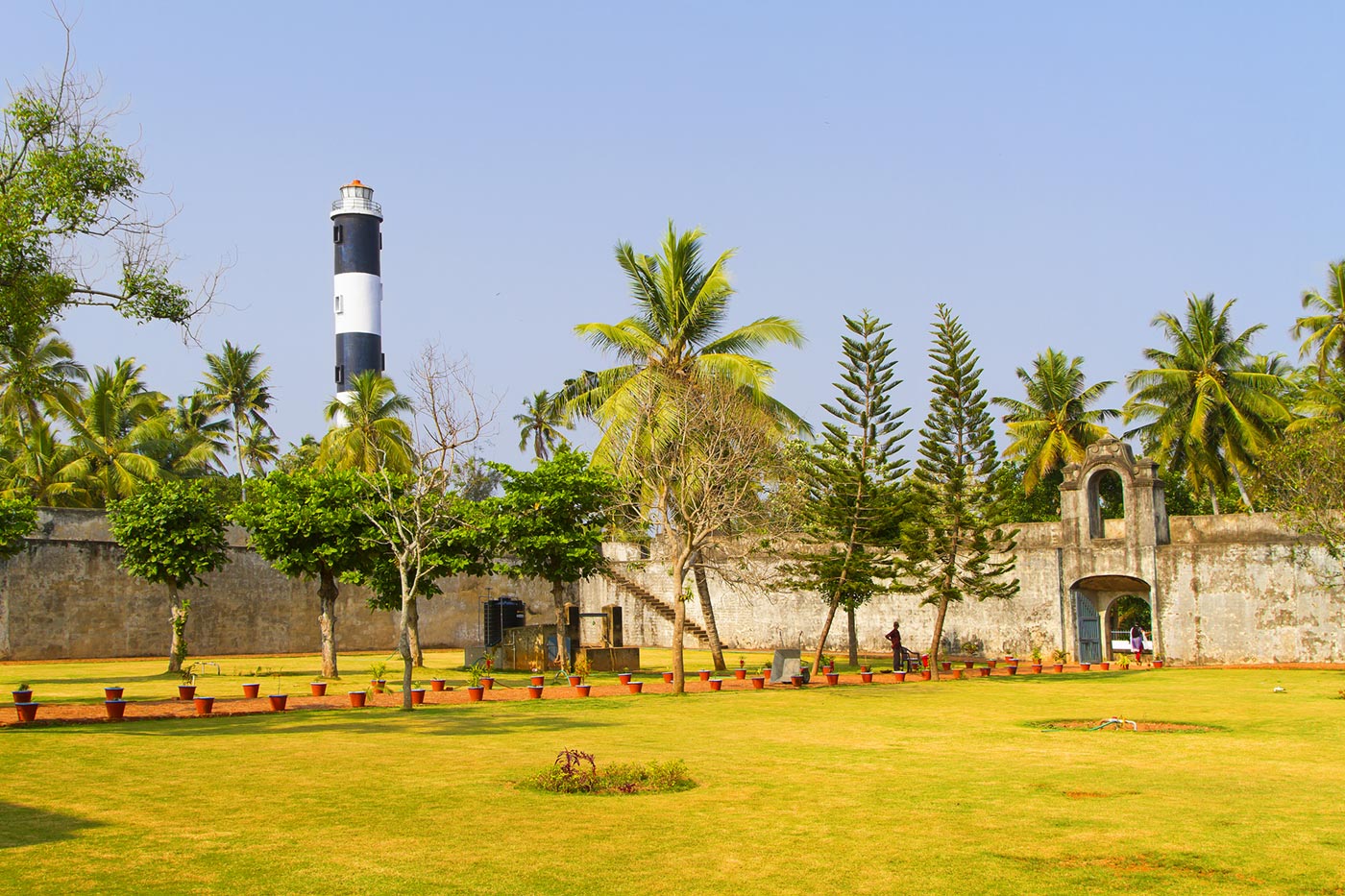
The views from Anjengo Lighthouse towards the fort and beach make the visit well worth it.
If there is something that characterizes and gives personality to Varkala beach, it is undoubtedly the 15-meter-high cliff that separates the town from the beach.
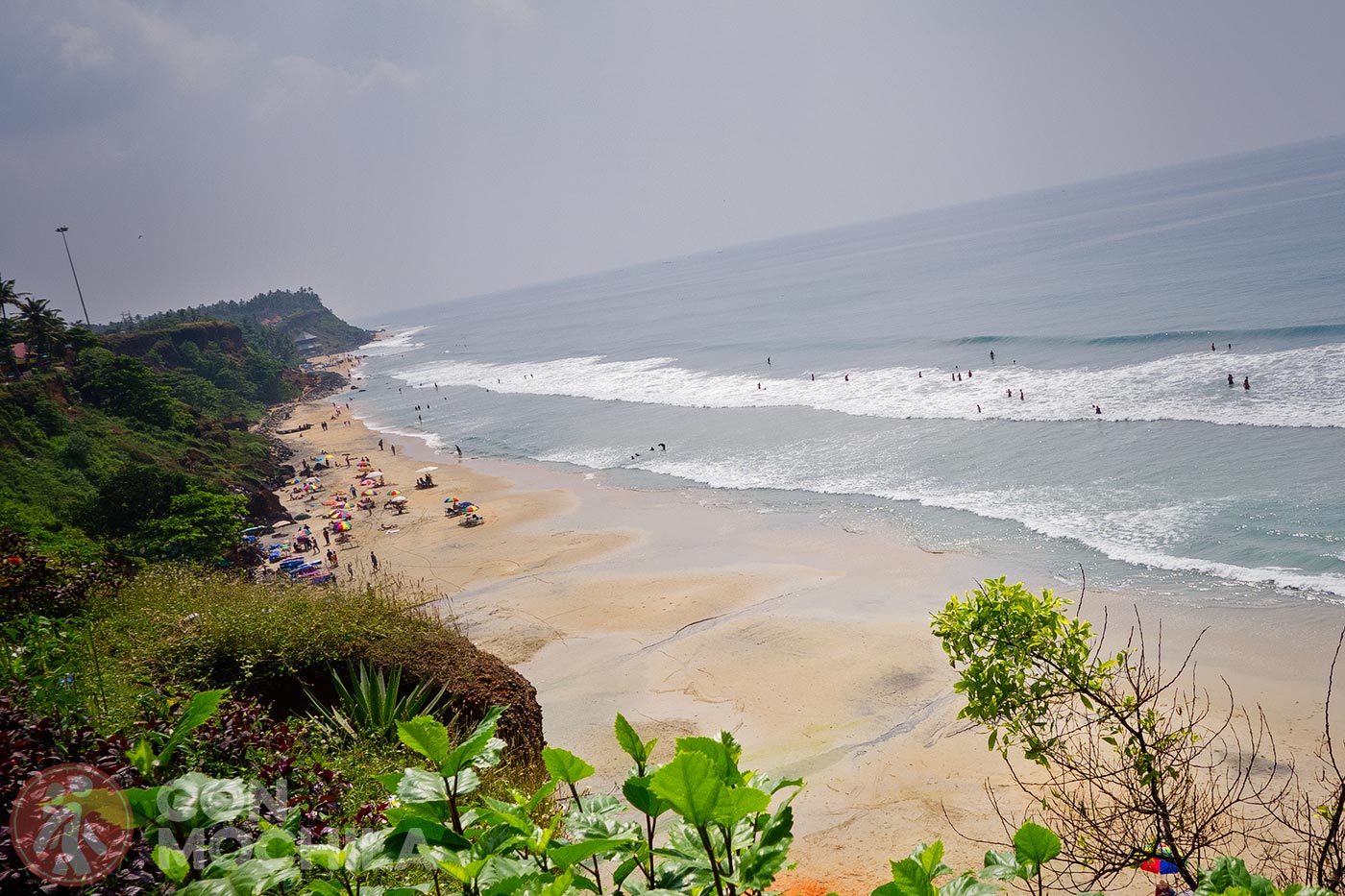
This famous cliff, which looks out over the Arabian Sea, is a precipice not suitable for people with vertigo (rather for those who have chewed bang, ahem ahem…), and on which destroyed steps dirt accumulates day after day (let’s not forget that we are in India).
The stretch of beach that these steps lead to is quite small, and almost everyone who stays in the area ends up going here.
Sivagiri Mutt is a pilgrimage center in Varkala, where Narayana Guru lived and died. He brought about social reform to overcome the ostracism that was exercised against the lower castes of Kerala in the early 20th century.
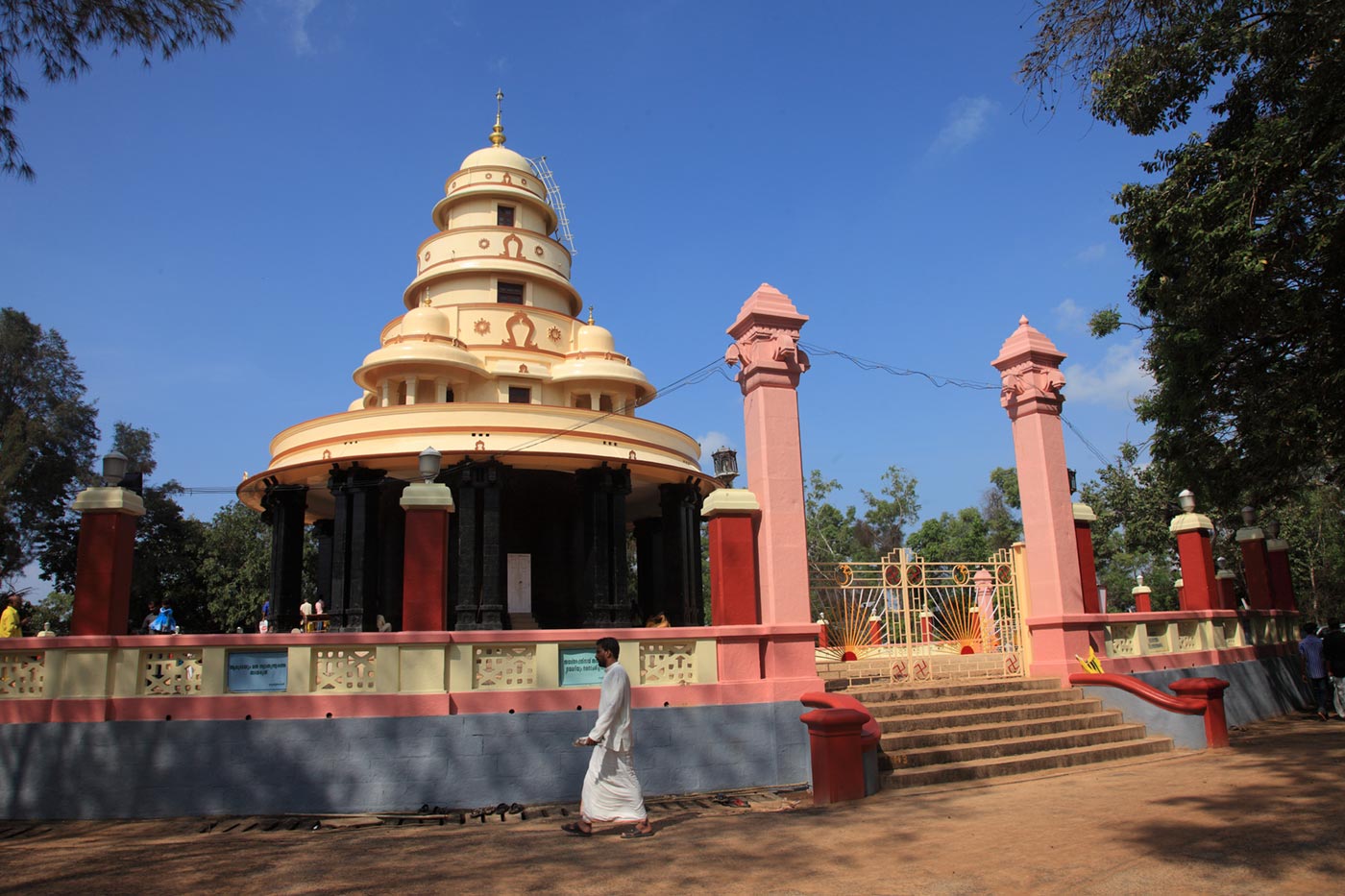
Surrounded by greenery, the building is striking for its white domes, and today it houses the headquarters of the organization that continues the teachings of Sree Narayana, as well as receiving numerous pilgrims during the Sivagiri Pilgrimage, from December 30th to January 1st.
One of the oldest temples in the Kerala region, the Sreenarayanapuram Temple, has a representation of Vishnu with four arms holding the conch (Shankha), the disc (Sudarshana Chakra), the club, and a lotus, and is also adorned with garlands and necklaces. In addition to the main one, there are several other shrines inside the temple.
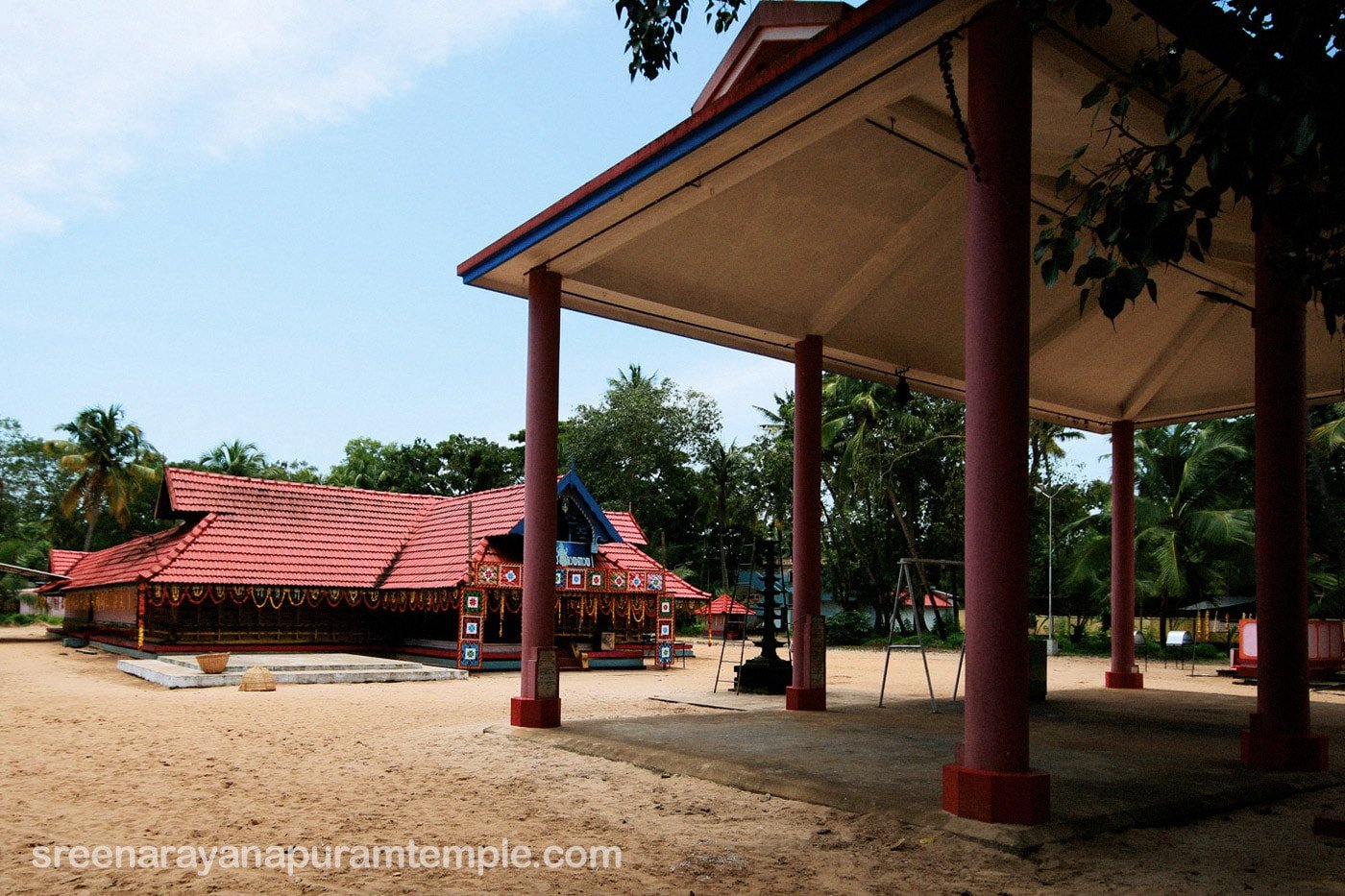
Various festivals and religious rituals are celebrated throughout the year, where followers and pilgrims honor and worship their idols through offerings or chants.
About 6 km from Varkala, we find Kappil, one of the least explored villages in the area. A small stretch of sand between a lake and the ocean forms a beach where there are quite a few currents, so it is important to take extreme precautions if you decide to go for a swim. During the rainy season, the stretch of sand disappears and the lake joins the sea.
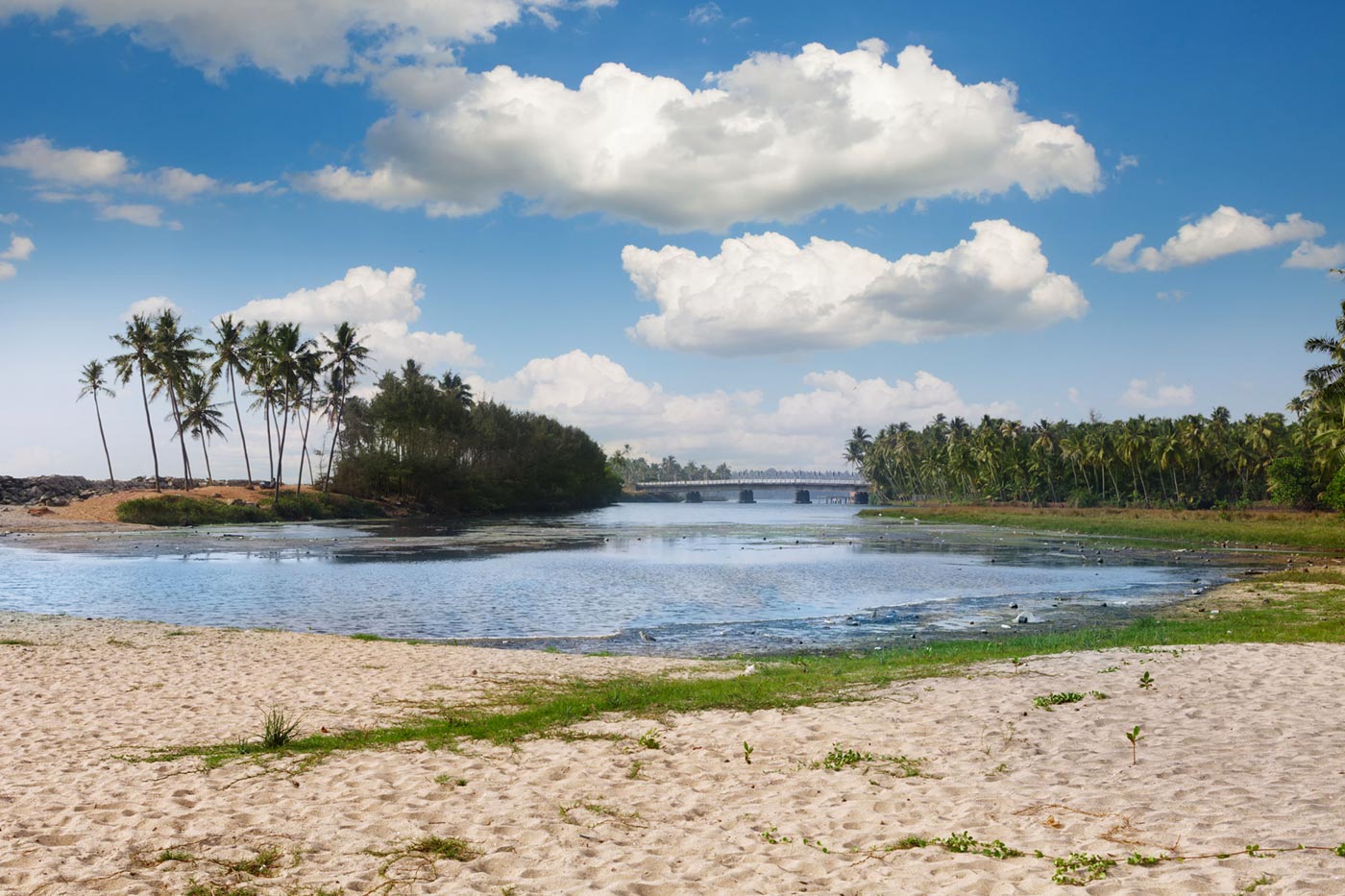
At the lake you can rent pedal boats and enjoy the tranquility of the backwaters.
Varkala still maintains a calm spirit, with temples and friendly local people, relaxing surroundings, beaches and backwaters so close. This has made it a very typical destination for practicing yoga, where numerous schools offer courses and spiritual retreats to meditate, relax and recharge your batteries.
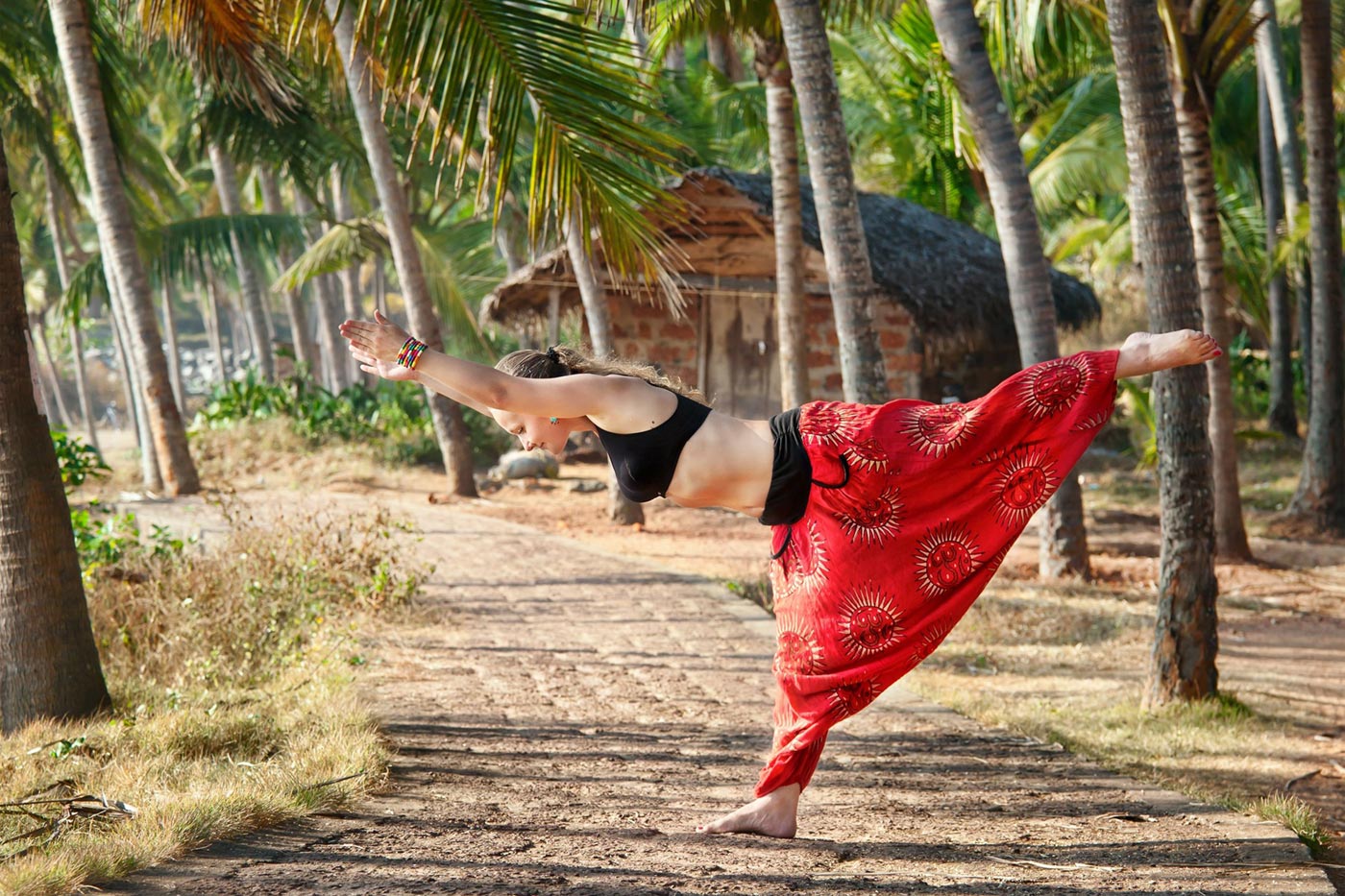
These schools offer all kinds of activities, including accommodation.
About 45 kilometers from Varkala, we find the city of Trivandrum or Thiruvananthapuram. From there, there are numerous tours offered to Varkala, such as a full-day excursion to visit the cliffs and some of its beaches, or another full-day excursion to tour the city and see its sacred temples, in which a guide will take you to see its most famous corners.
If you fancy seeing the backwaters around Varkala in a different way, we recommend this kayaking tour through the mangroves near Varkala and during sunrise or sunset. Motorboats are prohibited in this area, so it’s ideal for a leisurely paddle in the company of your guide.
The ideal place to stay is near Varkala beach, where you can find many restaurants and shops and where we stayed all the time. You can take a look at the recommendations we have detailed:
The best way to get around Varkala beach is on foot, but you can also rent a motorbike to explore nearby towns and visit some temples.
Click on the image and it will take you to a new Google Maps window with all the points of interest to travel around Varkala.